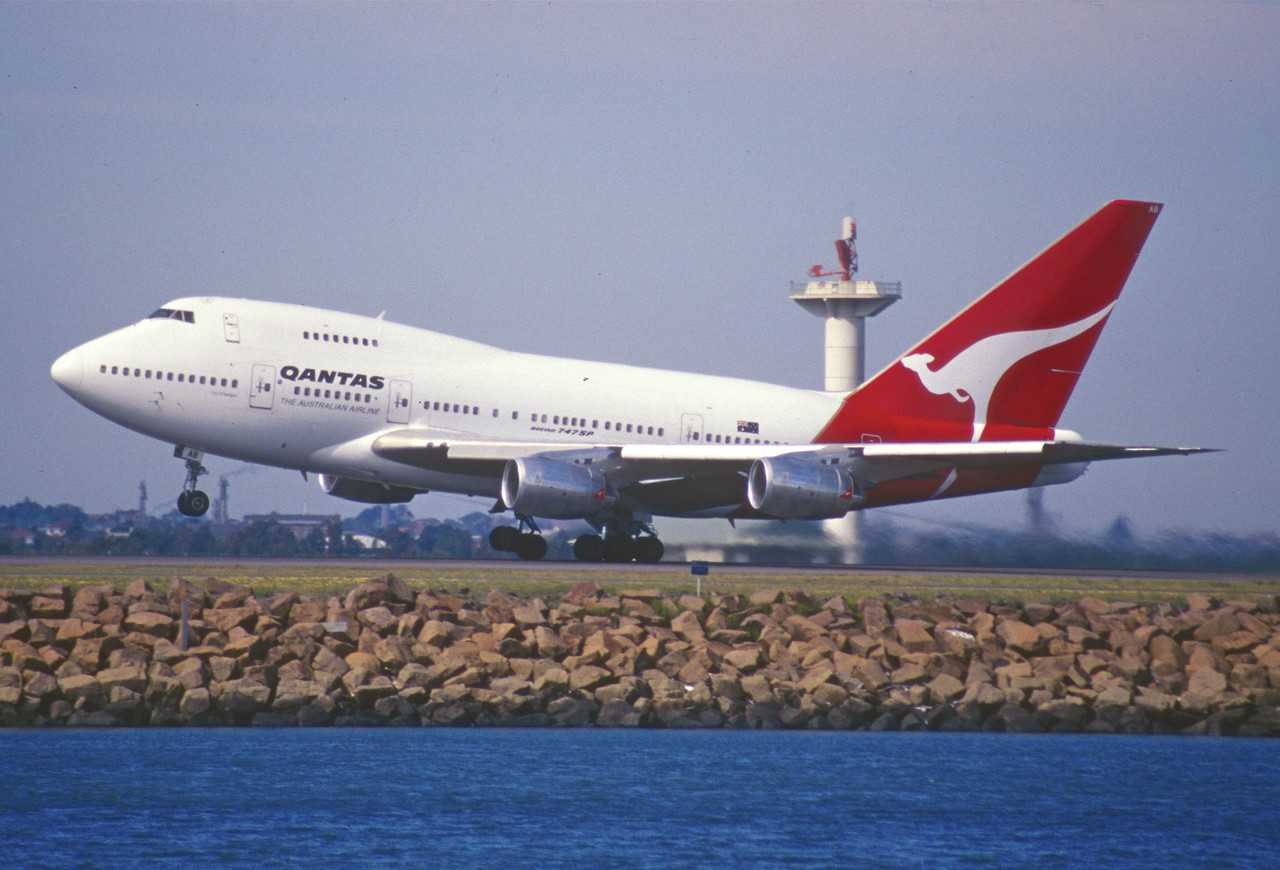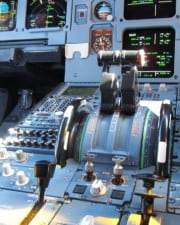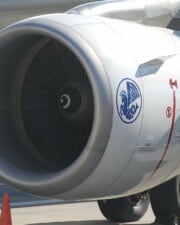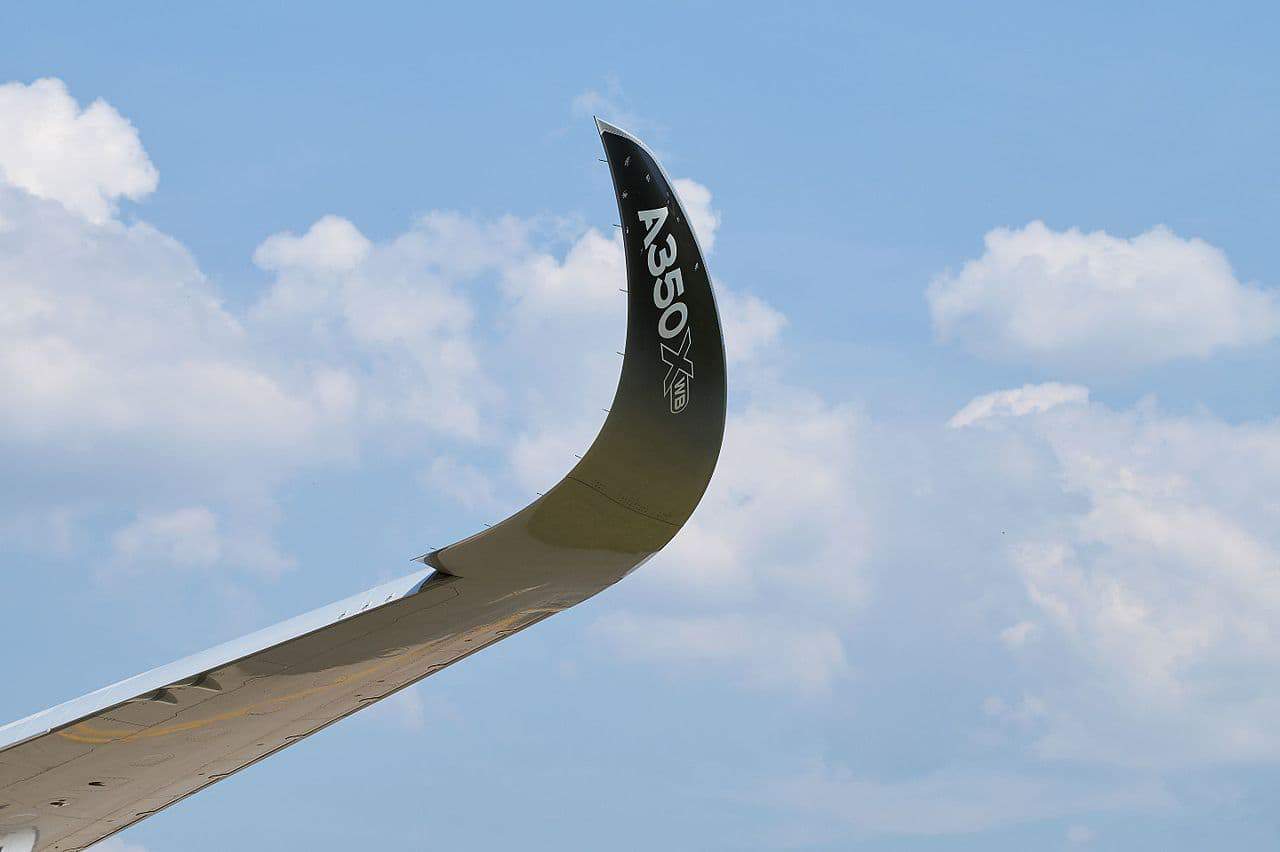Planes are complicated machines, and every part of them is designed purposefully. Even things that may seem purely aesthetic, like the angle the wings meet the fuselage, have deep impacts on how the plane flies and what the pilot can expect from it.
Table of Contents
The dihedral angle is a design feature found on many aircraft that helps improve stability. It is the angle at which the wings meet the fuselage when viewed from the front. The angle differs from design to design, and aeronautical engineers tinker with the precise amount of angle to find a balance between stability and maneuverability.
What is Dihedral Angle?
When you look at an aircraft head-on, you’ll often see that the wings intersect the fuselage at an angle. If the wing points up from its roots to its tips, it is described as a dihedral angle. It is called an anhedral angle if the wings point down, but this isn’t very common.
The dihedral angle is often confused with the dihedral effect, from which the angle takes its name. You’ll often have to use context clues as the term dihedral may be used alone to describe either the angle or the effect.
What is the Purpose of a Dihedral Angle?
Dihedral angle is one of those things built into the plane by the designers, not something the pilot can adjust or tinker with during flight. As the operator of an aircraft, it’s important not to lose perspective on the things that matter to us. This is one of the reasons that it can become so difficult to figure some of these things out.
If you’re studying to become a pilot, what you need to know about dihedral is limited. First, you need to know what the dihedral angle is, and that it varies from aircraft to aircraft. It is a tool that helps make the aircraft more stable around its lateral axis, which is sometimes called spiral stability.
The dihedral angle helps return the aircraft to straight and level flight due to the changes in the angle of attack on each wing that occurs during a sideslip.
If you’re an aerospace engineer looking to design aircraft and improve their stability, you could write entire books on the dihedral effect. It’s a complicated topic–as are all issues dealing with aircraft stability and the interaction between various design features.
How Does Dihedral Angle Affect Flight?
Dihedral is used to improve the stability of some aircraft around their roll axis. However, not all aircraft have a dihedral angle–some have wings that are perpendicular to the fuselage and the vertical axis. Some even have wings that angle downward–a design feature called anhedral. We’ll talk more about anhedral wings below.
Dihedral Effect
When the aircraft begins a roll left or right, it will sideslip. Its fuselage is no longer traveling parallel to the relative wind, and some of the wind is striking the side of the fuselage.
The natural tendency should be for the aircraft to return to a normal attitude with no sideslip. The aircraft should want to travel parallel to the relative wind. This returning to normal flight is thanks to the dihedral effect.
Several factors in design will contribute to the dihedral effect, not just the dihedral angle. For example, some planes need no dihedral angle because other factors provide enough dihedral effect that it is unnecessary.
The keel effect also plays a role in spiral stability. High-wing aircraft, for example, have a very pronounced keel effect. The wings are mounted above the CG, and the fuselage sides act like the keel of a boat. As a result, the fuselage is like a pendulum and swings the plane back to level. This is why most high-wing planes need less dihedral angle built-in.
Another design feature that works like the dihedral angle is sweepback. A plane with sweptback wings will also add to the dihedral effect and requires less dihedral angle to be built in.

Dihedral Wing Pros and Cons
Designing a plane from the ground up is never an easy task. Everything is included for a reason. A design leaves the drawing board built for a purpose–this one for transporting cargo, this one as a fighter jet, and this one as a pilot training aircraft.
Once a prototype has been built and flown, engineers will continue to tinker with the design as the test pilots find undesirable flight characteristics that need to be fixed.
Dihedral angle is one of the many tools that designers will tinker with.
Used to Improve Stability
Since the dihedral angle improves stability by increasing the dihedral effect, engineers may change the angle in later versions once the test pilots determine how much other factors affect how a plane flies. For example, if they need more stability, they’ll add more dihedral angle. Or, they might take some away if they want less stability and more maneuverability.
Increases Wingtip Clearance
Dihedral angle also has the handy benefit of increasing the wingtip to ground clearance. More clearance means greater safety since there is less chance of the wingtip striking objects that lie off the runway or taxiway. This might be very helpful for a low-wing aircraft with a large wingspan.

Dihedral Wing Disadvantages
Instead of thinking in terms of good and bad or pro versus con, let’s think about why aircraft designers make the aircraft the way they do. It’s not necessarily that one is good or bad; it’s that everything has a purpose. So what is the purpose of dihedral angle, and when would it not be appropriate?
The purpose is to make the aircraft more stable–so when would that not be desirable? Stability is not a black and white thing in aircraft design. Instead, it is a sliding scale. The more stable an aircraft is, the less maneuverable it becomes.
So you might want quite a bit of dihedral angle built into a transport category aircraft, like a Boeing 737. But, on the other hand, you might want none built into something extremely maneuverable, like an Extra 300 aerobatic plane.
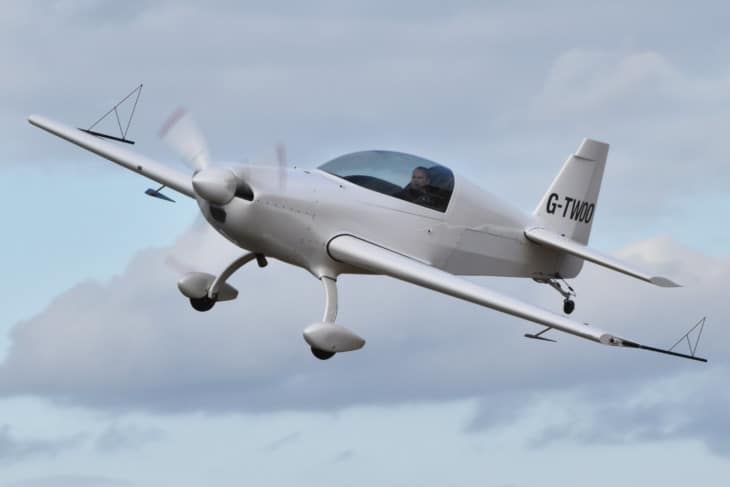
Anhedral vs Dihedral
What if you wanted a plane to be less stable and more maneuverable, but other factors (i.e., a high-wing design) already give it too much dihedral effect? When setting the wings perfectly straight (no dihedral angle) doesn’t work, designers sometimes put them at a negative angle.
This is common on some high-wing military planes, where more maneuverability is desired. The Harrier jump jet fighter and the C-5 Galaxy cargo plane are two examples.
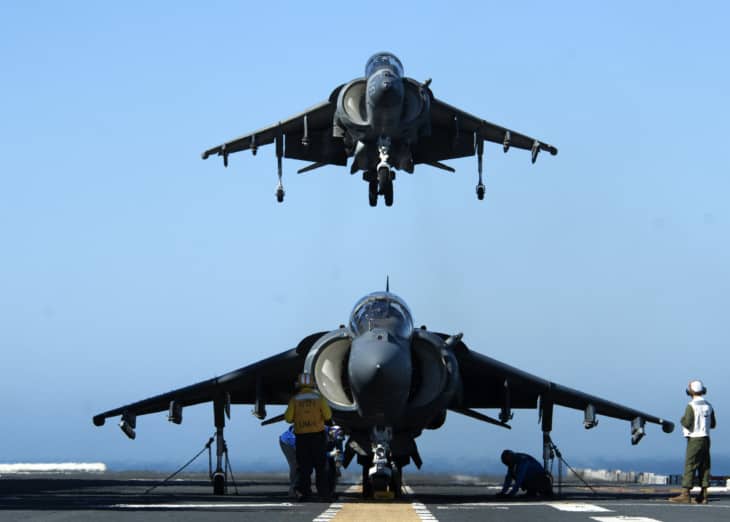
Polyhedral Wings
Finally, modern production techniques and space-age materials mean that engineers can incorporate much more complex wing shapes into their designs than in the past. For example, a polyhedral wing has different angles throughout its span.
One example is the F-4 Phantom fighter, which has folding wings for carrier duty. The designers discovered they could add dihedral from the pivot point outwards to add stability, leaving the wing roots at near a zero-angle. The aircraft also features a tailplane with a pronounced anhedral angle.
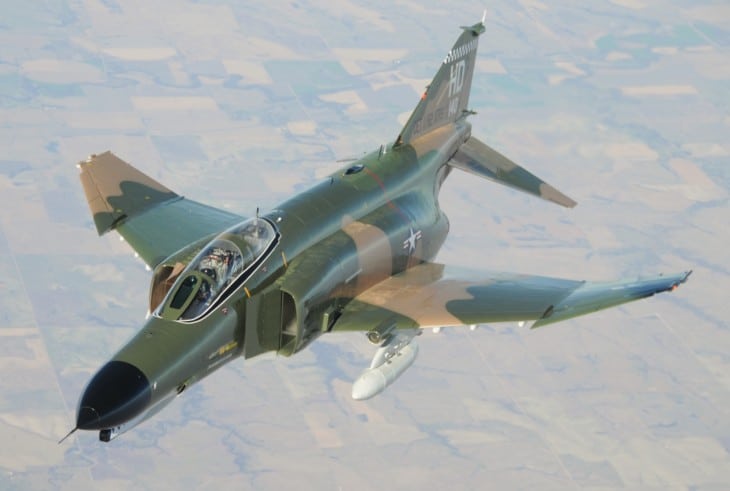
Related Posts


